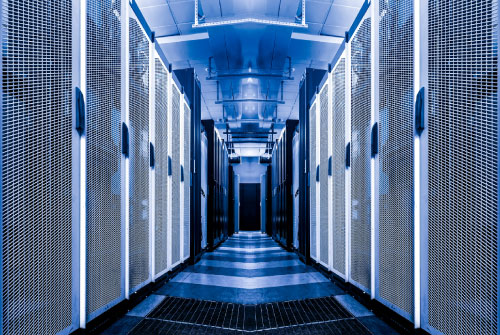What is an Edge data centre?

If you work in IT, you will have heard of Edge Computing–a style of data architecture where users’ cached content and other information is processed as close to those users’ own devices as possible while still using cloud storage.
So why is Edge Computing important? At its simplest, Edge Computing is the practice of capturing, processing, and analysing data near where it is created. This is important if you have a wearable on your wrist, are managing and monitoring traffic flow, safety monitoring an oil refinery, streaming video, or managing the electricity grid. All need access to quick real-time data, so Edge Computing brings the data, and the compute closest to the point of interaction.
Edge Computing is a compromise, combining the speed of on-site processing with the increased storage space that cloud computing can provide. Edge Computing has existed since the 1990s, when content sharing started to gain traction in our lives. This phenomenon has grown to become far more important.
The two main types of edge data centres are those that connect to a data centre within a single organisation, such as a large corporate headquarters, and those that connect customers to a network carrier such as a mobile phone carrier or internet service provider. Both will usually use a tiered architecture where recent and in-use files are processed in micro-data centres (MDCs) and/or edge data centres. In contrast, a central data centre acts as an archive and command centre.
Businesses that require high degrees of processing power often use micro-data centres (or MDCs)--even smaller twigs in the tree on which conventional edge data centres are branches and central data centres are trunks and limbs. MDCs usually contain ten servers or fewer.
Where are edge data centres located?
As the name suggests, edge data centres are located near the edge of a network, close to a user’s device but not out of range of the central data centre. The idea behind edge data centres is to be as close as physically possible to the device they are sending data to, which allows the data centres to deliver cloud services and cached content to devices at faster speeds with minimal latency.
Why is minimal latency a good thing? Latency refers to the delay before data transfer once a device receives an instruction to make a transfer, so the lower the latency you have, the quicker data is transmitted.
What are edge data centres used for?
Edge data centres are used like intersections, which allow multiple networks to converge to reach businesses and consumers alike, allowing for faster data transfer. Edge data centres are commonly used in some of the following sectors:
Telecommunications. With the need for strong mobile connections and faster data, telecommunications companies utilise cell tower edge data centres to get greater proximity to end-users by connecting mobile devices and wireless sensors.
Healthcare. As medical equipment becomes more intelligent and robotic, low latency and network reliability are crucial, which is why edge data centres are required.
Manufacturing. According to an article published by manufacturing automation magazine, the manufacturing industry produces 48 per cent of the global enterprise data. This data consists of Industrial Internet of Things (IIoT) which is data collected by various sensors, actuators and PLCs that monitor machines in real-time. Edge data centres then play a part in computing all the gathered data and sending it to the user.
Automotive. Self-driving (autopilot) cars are becoming more popular since this smart feature was championed by Tesla in 2014. Edge data centres play a part in ensuring self-driving cars receive the data they require with low latency. This feature requires massive computing power and an incredible amount of data in the region of 5TB an hour to function.
Why are edge data centres important?
Devices that are part of an edge-computing network sort through necessary data in real-time, sending time-sensitive files to an edge data centre while the primary data centre handles lower priorities. This can make a difference in user experience, especially when dealing with connectivity for the technologies consumers and/or customers take for granted, like appliances, music and TV streaming. In short, edge data centres keep high latency devices from throwing a hitch in the consumer’s day. For some networks, they are all but essential.
The future for edge data centres
With technology continuously evolving and the need for faster, reliable connections growing, edge data centres will continue to be utilised to benefit our personal and professional lives. For example, as working from home/hybrid working becomes more common, consumers will rely on edge data centres to keep a fast connection to the cloud, allowing them to remote into the office and work as normal.
Redline Group’s mission is to enable high-technology companies to build world-class teams through knowledge-led recruitment. For more information from a trusted partner with over four decades of experience, don’t hesitate to contact us on 01582 450054 or email info@RedlineGroup.com or view our latest job opportunities by clicking here.

